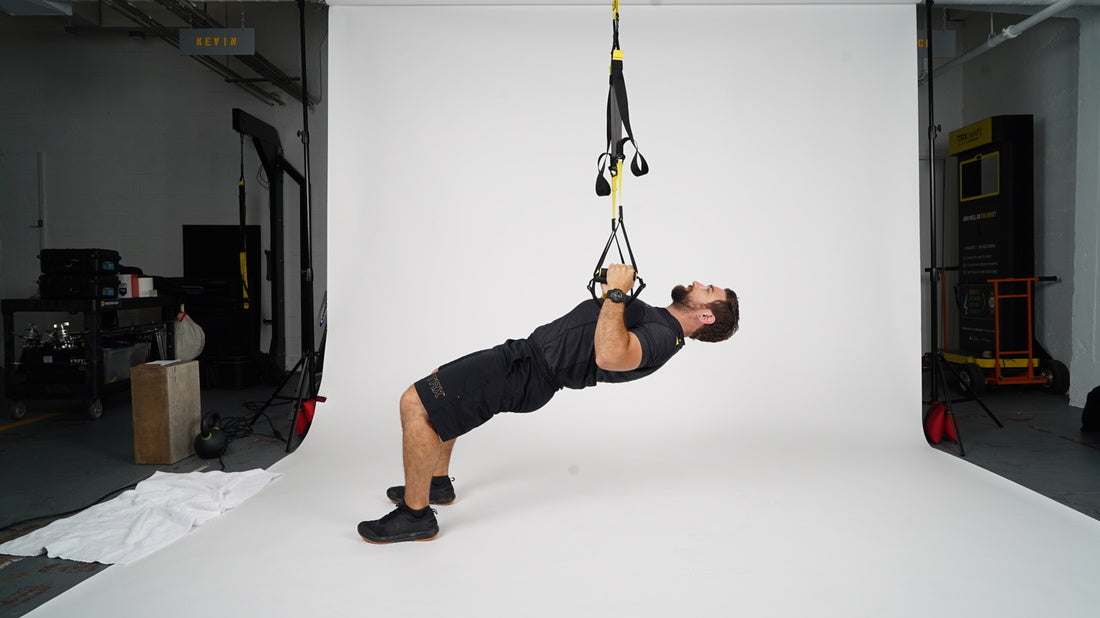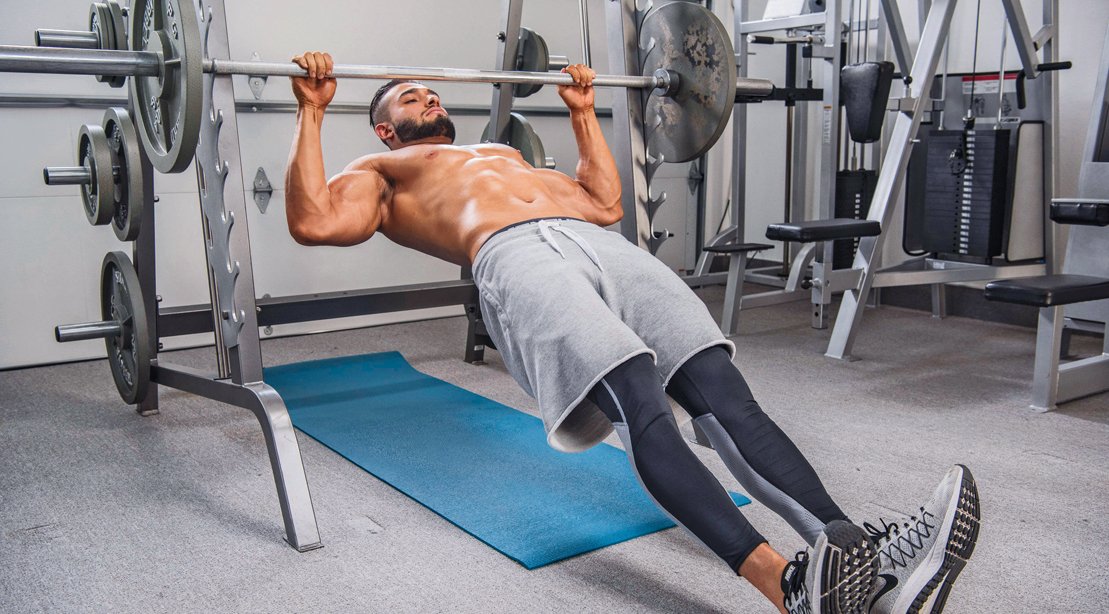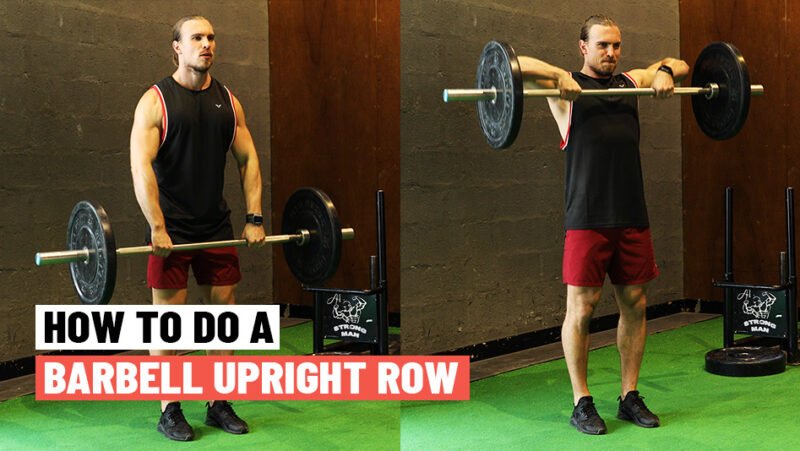An inverted row is an upper-body strength exercise focusing on the back muscles. It utilizes body weight as resistance while pulling the body upwards towards a bar.
Perfecting the inverted row can significantly enhance one’s overall upper-body strength, making it a staple in many fitness enthusiasts’ workout routines. The exercise targets the latissimus dorsi, rhomboids, and traps, as well as engaging the core and biceps, offering a comprehensive workout for the upper body.
Its scalability makes it suitable for all fitness levels, from beginners to advanced athletes. Not only does this exercise improve muscular strength, but it also aids in correcting posture and decreasing the risk of back injuries. By incorporating inverted rows into your exercise regimen, you’re taking a step towards a balanced and strong upper body.

Credit: www.stack.com
Elevating Your Workout: Inverted Rows
Are you ready to take your back workouts to the next level? Inverted rows stand out as a powerful move to build a stronger back. Unlike most exercises, this one uses your body weight to create resistance. Let’s dive into how inverted rows stack up against traditional back exercises, and explore the muscles they target.
Inverted Rows Vs. Traditional Back Exercises
Inverted rows shine for several reasons. They require minimal equipment, providing a solid workout with just a bar and your body. Here’s how they compare:
- Accessibility: Perfect for home gyms or ordinary fitness spaces.
- Safety: Low risk of injury with proper form.
- Versatility: Easy to adjust difficulty by changing body angle or foot position.
Traditional exercises like lat pulldowns and seated rows often need machines. This can make them less accessible for some. Inverted rows promote a natural body movement and can be more joint-friendly.
Muscles Worked During Inverted Rows
The inverted row is a compound movement, working multiple muscles at once. It’s effective for targeting:
| Muscle Group | Primary Role |
|---|---|
| Upper Back | Main mover during the row |
| Rhomboids & Trapezius | Stabilize shoulder blades |
| Biceps | Assist in pulling motion |
| Core | Engages to keep the body straight |
This exercise not only strengthens the back but also improves posture and balances muscle development. It’s an all-rounder that prepares your body for other lifts and daily activities.

Credit: www.facebook.com
Mastering The Move: Proper Technique And Form
Ready to boost your back strength with the inverted row? This bodyweight exercise is a must for a solid upper body. Get it right with perfect technique and form. Engage those muscles and let’s dive in!
Body Alignment Essentials
Start with the setup to nail the inverted row.
- Choose the right bar. It should be stable and at waist height.
- Lie beneath the bar. Keep your body straight from head to heels.
- Grip the bar just outside shoulder width with palms facing down.
- Pull your chest up to the bar. Keep those elbows close to your body.
Common Mistakes To Avoid
- Don’t let your hips sag.
- Avoid flaring your elbows out.
- Skip the neck straining. Keep your head in line with your spine.
- Don’t rush the movements. Slow and steady wins the race.
| Mistake | Impact | Solution |
|---|---|---|
| Hips sagging. | Less effective workout. | Engage your core. |
| Elbows flaring. | Shoulder strain. | Tuck elbows in. |
| Neck straining. | Potential injury. | Align head with spine. |
| Rushing reps. | Poor muscle engagement. | Slow down the tempo. |
Strength In Versatility: Variations Of The Inverted Row
The inverted row is a powerhouse exercise for the upper body. It works multiple muscles, such as your back, arms, and shoulders. With small changes, you can make the move fit your level or challenge. Explore how grip positions and tools can transform this foundational exercise.
Using Different Grip Positions
Changing your grip shifts how muscles work. Try these grips:
- Overhand grip: Palms facing away, this grip targets your upper back.
- Underhand grip: Palms facing you, it hits your biceps more.
- Neutral grip: Palms facing each other, good for shoulder health.
- Wide grip: More focus on the rear shoulder muscles.
Incorporating Equipment And Angles
Different tools and angles offer new challenges:
| Equipment | Benefits |
|---|---|
| TRX bands | Allows for a deeper row and core engagement. |
| Smith machine | Easy to adjust height for varying difficulty. |
| Barbell in a squat rack | Ideal for adding extra weight for a challenge. |
Playing with angles boosts your workout. Raise your feet on a bench to make the pull harder. Lower the bar for a more challenging angle. Each change works muscles in new ways.
Scaling Up Your Strength: Progressive Overload With Inverted Rows
Inverted rows are a fantastic way to build upper body strength. This exercise targets the back, biceps, and shoulders. Progressive overload is key to advancing in strength training. It means gradually increasing your exercise workload. Let’s explore how to amp up the intensity of your inverted rows and track your gains.
Gradually Increasing Intensity
Add more reps or sets to your routine each week. Start with what feels challenging yet doable. Enhance the angle of your body to the ground to make it tougher. The closer you are to horizontal, the harder it is.
- Use a weighted vest for adding extra pounds.
- Switch to a one-arm inverted row for a unilateral challenge.
| Week | Reps | Sets | Angle | Extra Weight |
|---|---|---|---|---|
| 1 | 8 | 3 | 45° | 0lbs |
| 2 | 10 | 3 | 45° | 5lbs |
Keep sessions consistent. Give your muscles time to recover with rest days.
Tracking Your Progress
Keeping a workout log is vital for tracking progress with inverted rows. Note down every detail of your workout. Include the date, number of reps and sets, body angle, and extra weight used.
- Use a fitness tracker app or a simple notebook.
- Review your records regularly to see your improvements.
- Set short-term goals to stay motivated.
Assess your form in a video and make sure it stays solid. Poor form can lead to injury and slow down progress.
Visual charts help you see your strength increase over time. Plot your weekly reps, sets, and total weight lifted.
Beyond The Back: Additional Benefits Of Inverted Rows
The inverted row isn’t just a powerful exercise for building a broad, muscular back. It bears an array of benefits extending well beyond the lats. Let’s look closer at how this exercise can improve overall body function and performance.
Improving Posture And Reducing Injury Risk
Good posture hinges on the strength of your back muscles. Inverted rows target these muscles, promoting spinal alignment and shoulder stability. As a result, incorporating inverted rows into your workout could lead to a decrease in back pain and lower the risk of shoulder injuries.
- Strengthens the upper back and shoulders
- Encourages a straighter spine
- Enhances neck and shoulder muscle coordination
Enhancing Functional Strength
Inverted rows forge real-world strength that you can call upon in everyday activities. The pulling motion used in an inverted row simulates common movements such as lifting groceries, pulling open doors, or playing tug-of-war with your dog.
- Boosts strength for daily tasks and sports performance
- Develops grip strength for a firm handshake and better hold on objects
- Improves muscle endurance leading to longer-lasting energy

Credit: www.trxtraining.com
Integrating Inverted Rows Into Your Routine
Want to supercharge your fitness routine with an exercise that targets multiple muscles at once? Say hello to the inverted row. This powerhouse move is stellar for strengthening your back, arms, and core. Now, let’s talk about integrating inverted rows into your fitness schedule effectively.
Balancing Your Workout Plan
If your goal is a balanced, toned physique, variety in your workouts is key. Inverted rows should be part of a plan that challenges different muscle groups. This ensures symmetry and balanced strength. Aim to blend inverted rows with push and leg exercises.
Here’s a sample weekly plan:
| Day | Workout Focus |
|---|---|
| Monday | Chest and Triceps |
| Wednesday | Inverted Rows and Legs |
| Friday | Shoulders and Biceps |
Remember to include rest days for muscle recovery.
Combining With Other Strength Training Exercises
Pairing inverted rows with complementary exercises can boost your strength gains. Contrast inverted rows with pushing movements for a balanced attack. After inverted rows, try push-ups or shoulder presses. This approach promotes muscle harmony and joint health.
- Upper body push: Bench press, overhead press
- Lower body: Squats, lunges
- Core work: Planks, leg raises
For optimal results, complete 3 sets of 8-12 reps of inverted rows. Follow with a push exercise, then target your lower body and core. This creates a full-body workout that’s tough to beat.
Frequently Asked Questions On Inverted Row
What Does An Inverted Row Work?
An inverted row primarily targets the upper back muscles, including the latissimus dorsi, trapezius, and rhomboids. It also engages the biceps and core for stability.
Are Inverted Rows As Good As Pull Ups?
Inverted rows and pull-ups target different muscles at varied intensity levels. While both exercises strengthen the upper body, pull-ups demand more strength and are generally considered more challenging than inverted rows.
Are Inverted Rows As Good As Bent Over Rows?
Inverted rows are an effective alternative to bent-over rows, targeting the back muscles similarly but with reduced lower back strain. Each exercise has unique benefits for building strength and muscle endurance.
Are Inverted Rows Enough For Back?
Inverted rows can effectively strengthen the back, but for balanced development, include other exercises like pull-ups and deadlifts. Diversity in training ensures comprehensive back muscle growth.
Conclusion
Embarking on the journey of mastering the inverted row can transform your upper body strength. This exercise is a powerhouse for muscle growth and endurance. By consistently incorporating it into your fitness routine, you’ll see notable improvements. Ready to challenge yourself?
The rewards of the inverted row await.


